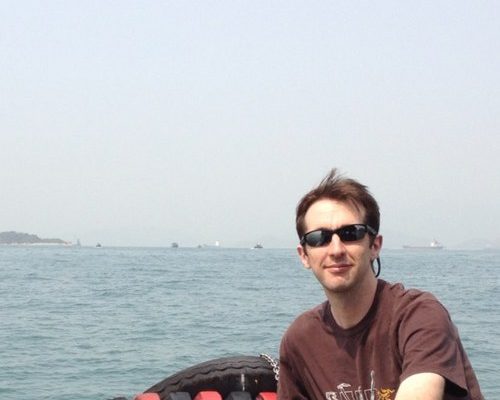President’s Letter, December 2016
Dear Members
News from the Deep-Sea Biology Society
I am writing to you all as your new President of the Deep-Sea Biology Society, having taken over the Presidency from Craig McClain in August this year, in one of the less well-publicised Presidential elections of 2016.
On Friday 7 December 2012, I remember Craig standing up at the end of the 13th Deep-Sea Biology Symposium in Wellington, New Zealand and proposing the idea for a formal Deep-Sea Biology Society to ensure the continued success of the symposia, and to promote demographic diversity in the deep-sea science community. The Wellington meeting was smaller than normal, and I think it is fair to say, dominated by a new and younger generation of deep-sea biologists. It felt, I think, a little bit revolutionary, and Craig’s idea fitted right in.
Four years on, we have a new and thriving Society, and a Symposium that has grown tremendously in numbers, with almost 500 registered delegates at the 14th DSBS in Aveiro, Portugal, where the Society was made the first steps to establish itself as the new supporting body of the Symposium. This success is down to the incredible hard work of the Organising Committee of the 14th DSBS, led by Marina Cunha and the tireless work of Craig, the Society officers and trustees to develop a new society from scratch. As we move towards the 15th DSBS, to be held in Monterey Bay, USA in 2018 led by our new Vice President for Conferences, Steve Haddock, I am confident that the Symposium and the Society will continue to grow at a tremendous pace.
The growth of the applied research agenda
I am certain that some of this growth in our discipline has come from continued awe and wonder into the scientific mysteries of the deep sea. There is no doubt in my mind that the pure science justification for studying the deep sea is greater than ever. But we must also acknowledge that in recent years, the last decade in particular, there has been remarkable growth of interest in the applied aspects of deep-sea biology. How are we to sustainably manage our offshore and deep-water fisheries? What biotechnological resources exist in deep-sea animals and sediments? What will be the impact of deep-sea mineral extraction?
A society for everyone
Many of the 500 delegates at the 14th DSBS were there with these questions in their minds. And there will be even more at the 15th DSBS in 2018, where we may hear, for example, results from the first commercial-scale tests of deep-water mining. There has never been a more important time for a scientific Deep-Sea Biology Society. A forum for learned discussion, communication and publication. Above all, a society for all that encourages debate and participation from the full global network of academic and professional deep-sea biologists.
My vision for the Society is as a modern, open and accessible platform for traditional scientific discussion. The society is not, and should not be, a conservation advocacy group, or a sponsor of multi-disciplinary science projects. These areas are well served by our partner organisations, the Deep Ocean Stewardship Initiative (DOSI) and the International Network for the Scientific Investigation of Deep-sea Ecosystems (INDEEP). We are already well on the way to creating this platform, with the new Society website (launched this year), social media streams and of course, the programme of Symposia. A generous grant from the Lounsbery Foundation this year, overseen by Craig McClain and Holly Bik, will allow us to further develop this platform and offer a wide range of benefits to members such as travel funds for conferences and a new mentoring scheme.
Your help is needed
The Society is still young, and there is much work to be done in the next months. For example, a considerable amount of behind-the-scenes work is going to be required from the Society officers over the next 6 months to ensure the Society has a new constitution that is compliant with tax law and to enable future growth. We also need to overhaul our membership and member-communication system and to link membership applications to registration at the Symposia. To be a fully-functioning learned society and deliver communication in as many ways as possible, we need a new Deep-Sea Biology journal and I have already tasked the Society Officers with developing this idea.
What can you do to help? Right now, the Society needs to grow its formal membership. If your membership has lapsed, please renew. Please recommend to your colleagues to join and please write to me or any of the Society Officers with ideas on what you would like the Society to offer and how you think it should grow.
Watch this space
In January we will release plans for our awards and travel grants for 2017, in particular, to support mentoring, early-career researchers and those from developing nations. Our website and social-media feeds run a continuous stream of deep-sea biology-related news, and will be the best place to get information on these new awards. Starting in 2017, the Society will start to hold Annual General Meetings of the membership, that we plan to link directly to the deep-sea themed international Symposia (in 2017, we plan for this to be at the Chemosynthesis-based Ecosystems meeting in Woods Hole, USA, Aug 27 – 1 Sept). In 2018, we will hold our triennial Deep-Sea Biology Symposium in Monterey, California. These new meetings, and the awards that we will present at them, will we hope foster a new sense of academic community for our members and supporters. Attendance at these meetings will be one of the main ways of contributing to the growth of the Society. Finally, I will plan to update members in a biennial President’s Letter.
Thank you for your interest and support of the Deep-Sea Biology Society, and wishing you season’s greetings and a very happy new year.
Adrian Glover,
President

